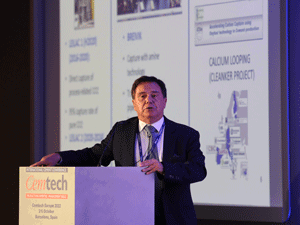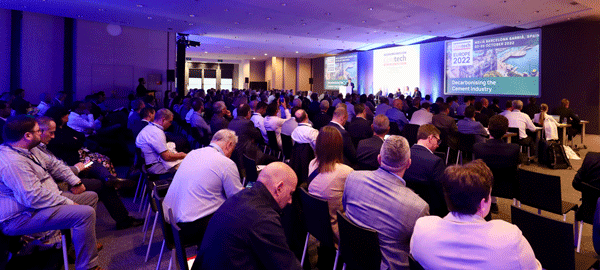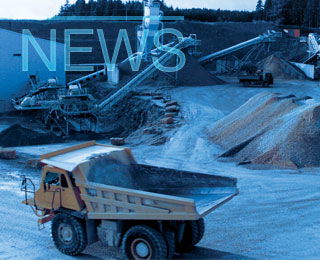The European cement industry is facing increased costs imposed by the EU Emissions Trading System (ETS), which is creating a competitive disadvantage with countries outside of the region.

Isidoro Miranda, president of CEMBUREAU, warns of
increasing production costs due to the EU ETS during his
presentation at Cemtech Europe
“Today the EU industry is paying EUR8/t more to produce cement than countries outside of the ETS”, said Isidoro Miranda, president of Cembureau, the European cement association, in a wide-ranging keynote speech while addressing delegates at the annual Cemtech Europe meeting, currently being held in Barcelona, Spain.
As a result, Europe is starting to see evidence of higher import penetration, argued Mr Miranda. According to Eurostat data, EU cement imports have increase 300 per cent over the past five years, albeit from a low base, and they now represent around 10 per cent of consumption in the region.
Going forward, the carbon cost in cement production is expected to increase incrementally as free allocation of allowances reduce under the fourth phase of the Emissions Trading System, which commenced in January 2021.
In response, the EU intends to implement the Carbon Border Adjustment Mechanism (CBAM) – a proposed carbon tariff which will be imposed on carbon intensive products imported to the EU, which aims to prevent carbon leakage – the movement of carbon intensive industry outside of the Europe.
Free allocation tapering under CBAM is expected to result in approximately a 10 per cent annual reduction of emissions rights per year to 2035, meaning zero free rights by 2036.
Mr Miranda told delegates that Cembureau was committed to achieving a fair deal for EU cement producers as it works with the European Parliament on the timely implementation of the CBAM alongside the EU ETS.

Cemtech Europe is currently being held in Barcelona, Spain, with 300 cement industry professionals from 40 countries
Cemtech, organised by International Cement Review, is Europe’s leading industry conference and exhibition, has attracted 300 delegates from 40 nations for a two-day programme addressing all aspect of cement industry decarbonisation.
